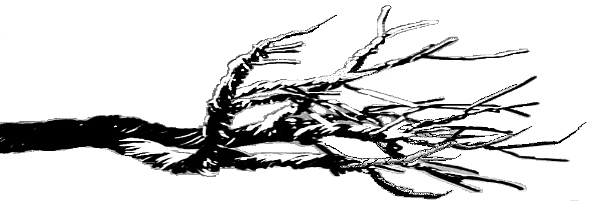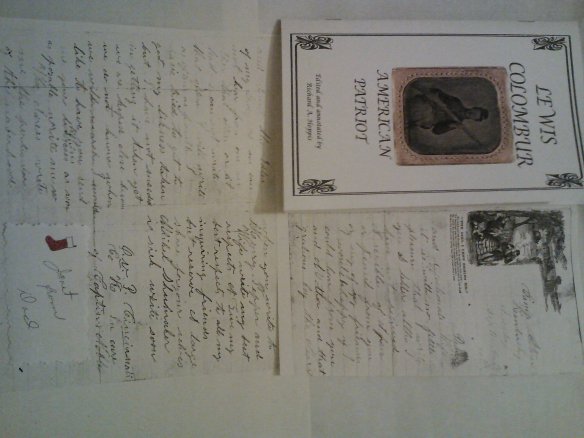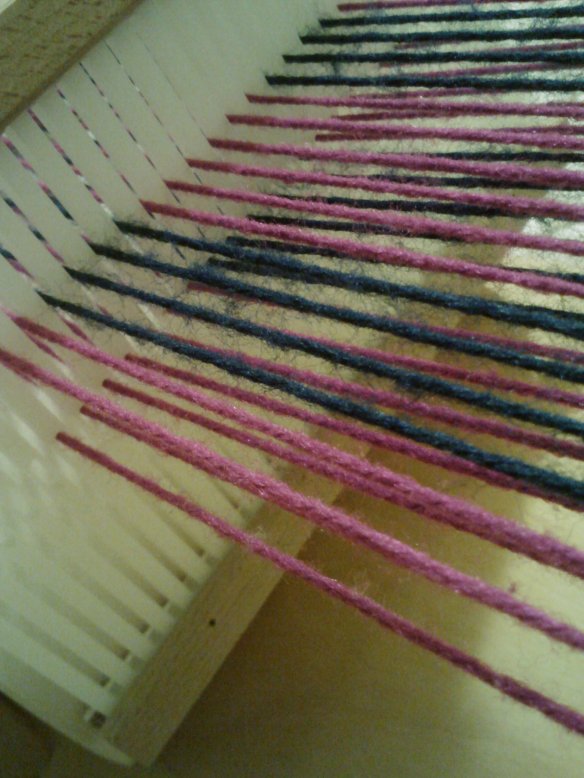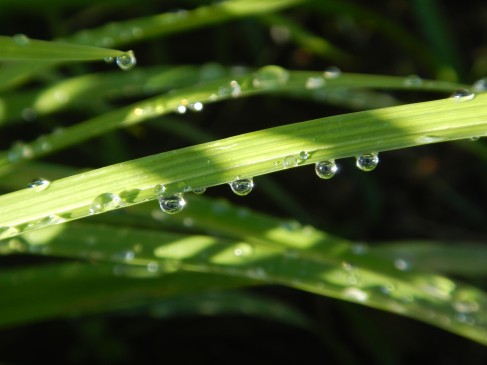Tracing Dad’s (and Mom’s) family I keep learning how frequently I crossed the paths of my ancestors while criss-crossing the country.
Today while searching, I found myself remembering the cold winter nights we spent a few miles from Valley Forge. Even with the warmth of the semi’s heater, the cold snuck into the sleeper.
Dad knew his ancestor John Frink (1732 – 1821) served during The War for Independence. Both Laura Jane McKinstry White and Peggy Frink Humphreys record this fact. And Dad proudly shared the information with his daughters and grandchildren.
In “The Frink Family In America”, second edition, Peggy Humphreys writes:
“John was a Private, Mass. Militia, Capt. Robert Oliver’s Co., Col. John Greaton’s Regt, in the Revolution. He served from February 14, 1777 – February 14, 1780, “
Laura Jane cited “Mass. Soldiers and Sailors of Revolutionary War”, Vol. VI. Pages 101 – 102 in her Frink manuscript:
Frink, John, Springfield. List of men raised to serve in the Continental Army from
1st, 2d, 3d, and 8th, cos., 1st Hampshire Co. regt., as returned by Capt. Walter
Pynchon and Capt. David Burt, sworn to in Hampshire Co., April 6, 1779; resi-
dence, Springfield ; engaged for town of Springfield ; joined Capt. Oliver’s co..
Col. Greaton’s regt. ; terra, 3 years, to expire Jan. -, 1780 ; reported as belonging
to 8th CO. ; also. Private, Capt. Robert Oliver’s co., Col. Johij Greaton’s (2d) regt. ;
Continental Army pay accounts for service from Feb. 17, 1777, to Dec. 31, 1779;
also, same co. and regt. ; return [year not given] ; mustered by County Muster
Master Woodbridge; also, Capt. Edward Cumston’s co.. Col. John Greaton’s
regt.; return of men in camp on or before Aug. 15, 1777; also. Major’s co., Col.
Greaton’s regt. ; Continental Army paj’ accounts for service from Jan. 1, 1780, to
Feb. 14, 1780.
Her account matched the record from archive.org “Massachusetts soldiers and sailors of the revolutionary war. Vol. 6.
Laura Jane related family tradition that John Frink “fought the of Monmouth and Saratoga and that they at Fort Green L. II, when Washington had to retreat with his forces across New Jersey and the Delaware River, and marched to Valley Forge, where they spent that memorable winter of the revolution, and where their names are recorded on the roll of the Massachusetts soldiers of the Revolution; and if any part of the tradition in Massachusetts reports, it will have to rest under the Scotch verdict, “NOT PROVEN”.
With the aid of the internet I found some proof to the family tradition.
The Worcester Polytechnic Institute website has the following information concerning the 1st and 2nd Battles of Saratoga from the Department of Military Science:
1st Battle September 19, 1777
Gates’ Bemis Heights forces that the Right Wing under the command of Major General Horatio Gates included Colonel Greaton and the 3rd Massachusetts Continental Regiment.
2nd Battle October 7, 1777
Gates’ Reorganized Bemis Heights forces that the Right Wing, under the command of Major General Benjamin Lincoln included Colonel Greaton and the 3rd Massachusetts Continental Regiment
Greaton’s regiment was also at The Battle of Monmouth (June 28, 1778).
From Wikipedia is the following information concerning Colonel John Greaton’s regiment:
“The regiment served in the Saratoga campaign, then marched south to join Washington in the Middle Department. It served in the Philadelphia campaign and wintered at Valley Forge. In 1778 it served in the Monmouth campaign, then at Rhode Island.”
Unfortunately I do not have records of John Frink’s actual service, i.e. pension records, pay records, etc. So, I cannot be certain he was actually at the Battles of Saratoga and Monmouth, or the winter at Valley Forge. But, it is a beginning with my search for proof.
While in the mood for searching I found a few more ancestors who took part in the American Revolution on Dad’s Mother’s side:
Calvin Torrey b. March 20, 1758 d. December 2, 1820. Son of Joseph Torrey (1722 – 1795) and Silence French (1733 – 1811). Husband of Mary Carrier (1763 – 1815)
According to the Center Cemetery, Southampton, Hampshire County, Massachusetts, he was a private Continental Line and the 1st Revolutionary soldier buried there.
His daughter Sabora Torrey (1808 – 1832) married Theodore Morgan Frink (1804 – 1891), grandson of John Frink ((1732 – 1821) by his son Luther Frink (1770 – 1853). Sabora Torrey’s name is also spelled Sabra, Sarah, and Sabrina.
The Isaac Van Valkenburgs (a father and son) served on opposing sides during the struggle for our independence.
Father Isaac VanValkenburg (christened 1712 – died between 1789/96) served on the American side.
His son Isaac (christened 1732 – ) was a Loyalist and served with Butler’s Rangers after fleeing to Canada. He had been imprisoned several times by the Americans. When Father Isaac was captured by the British, he was taken to Canada because of his son. The younger Isaac was also known by the name Vollick. His mother was Maria Bradt (also spelled Bradden and Brat), (christened 1713), she was the daughter of Storm (Strum) Brat and Sophia Uzielle.
Isaac Van Valkenburg Vollick married Anna Marie Warner. She was forced from her home after he fled because she continued to support the British. She and their ten children made their way to Canada. Their son Matthes (Matthias) Van Valkenburg (christened 1759 – ) married Bertha (Baertie) Bradt (christened 1758 – ) Matthes and Bertha’s daughter Sarah Van Valkenburg Vollick (1798 – 1880) married John Ostrom (1773 – 1836)
Lucas Morgan (1742 – 1817)
“The Miles Morgan Family of Springfield Massachusetts” by Titus Morgan 1904:
Page 36
“Captain Joseph Morgan marched with ten men from his company in the 3rd regiment by Lieutenant Colonel Timothy Robinson of Granville which went from West Springfield to Ticonderoga to reinforce the Northern army. He was in service 28 days from October 21 to November 17, 1776.
His brother Lucas Morgan served in this company for the same length of time.
Captain Joseph Morgan with his company in the regiment commanded by Colonel John Moseley served from September 21 to October 17, 1777 on an expedition in the Northern department.
Lucas and Jesse Morgan also served in this company for the same period.”
His daughter Phoebe married Luther Frink in 1794. A descendant of Phoebe and Luther donated a handkerchief Phoebe spun and wove in about 1790 to the DAR Museum in 1921.
Oh, Mom, I didn’t forget to search for your family.
According to a Rossman researcher I was in contact with:
Gramy’s great grandfather and great grandmother were Elias Rossman (1764 – ) and Elizabeth Dipple .
“Elias Rossman, born 03 Feb 1764 in Livingston, New York; died Aft. 1850 in Livingston, New York. He was the son of .Johannes Rossman and Magdalena Shufelt. He married. Elizabeth Dippel 11 Nov 1798 in Livingston, New York (Source: Kelly, Arthur C.M., Marriages: Linlithgo Reformed Church, Livingston, New York – 1723 – 1899, (Kinship, Rhinebeck New York – 1970), Item #368.).
Notes for Elias Rossman:
Information on Elias and his descendants has come from DAR #447983 – submission of Pearl Liberty Lewis.”
I have not been able to locate this record.
But finally, today July 4th 2013 found this record:
John Rossman m. 1764 – Shufelt (d. 1830);
Also No. 25788
John Rossman (1739-1836) was ensign in Captain Blatner’s company, 10th
regiment, Albany County, New York militia. He was born in Albany County;
died in Columbia County, N. Y.
The National Society of the Daughters of the American Revolution Volume 92
Mrs. Francis Allen Arnold.
DAR ID Number: 91001
More paths to trace or retrace to find the paths they traveled.







